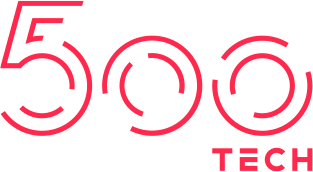- info@500tech.com
- HaYetsira 19, Ramat Gan
React and Redux Course
Standard Syllabus
I. Core Concepts
A walkthrough over React’s concepts and its approach for modern front- end development. Gaining a solid understanding of what is React and how it works with single-page apps.
- High-level React: Virtual DOM, change detection, difference from other frameworks
- Shifting mindset from MVC to component architecture
- Ecosystem and popular libraries
II. Modern JavaScript and JSX
Acquiring knowledge and practical usage of modern JavaScript APIs and patterns used daily with React. Understand the advantage of JSX over templating engines.
- JavaScript refresher: module system, classes, scoping, new operators, destructuring, etc
- Leveraging new language features to write cleaner code
- Understanding JSX: how it works, difference from templating engines, and its restrictions
III. Component Basics
Gaining solid understanding of React components. Getting familiar with terminology, learning different ways to create components. Understanding the render flow and lifecycle.
- Props and State; difference between stateful and stateless components; PropTypes; Glimpse into useState hook
- Component lifecycle methods, refs, event and input handling, conditional rendering; Glimpse into useEffect hook
- Controlled, uncontrolled, and presentational components
IV. Introduction to Redux
Understanding what Redux is and why we should use it. Learning how to bring Redux into existing projects and how structure new ones.
- Redux core concepts: single source of truth, unidirectional data flow, and immutability.
- React and Redux: typical directory structure, connecting to store
- Basic Redux parts: store, actions, reducers, and middleware
V. React and Redux Ecosystem
Getting familiar with some popular 3rd-party libraries required for most single-page applications.
- Common approaches to styling: CSS-in-JS, styled components, plain old CSS
- Routing with React and Redux, navigation, implementing layouts
- Strategies, practices, and tools for handling immutable data
VI. Testing and Debugging
Reasoning about testing different parts of React/Redux applications. Effective debugging of unidirectional flow and complex UI trees.
- Testing React components: snapshots and DOM, integration, end-to-end, visual, and manual
- Testing logic: actions, reducers, selectors, and middleware
- Debugging: general approaches as well as tools and extensions
Additional Modules
Advanced Components
Taking advantage of React’s powerful features for better and cleaner components. Advanced patterns for building reusable and extensible components.
- Composition patterns: higher- order components; render props; React.Children
- Glimpse into writing custom hooks for encapsulating and reusing behaviour
- Useful React APIs: fragments, pure components, context, and portals
- Performance considerations and optimizations, lazy loading components
Practical React
Diving deeper into popular 3rd-party libraries addressing common pain points in single-page applications.
- Different approaches to styling, forms, and routing
- Solving business problems for a11y, i18n, and SEO
- Choosing the right libraries and learning resources
Advanced Redux
Leveraging Redux middleware and other tools to support complex flows. Understand the importance of best practices and good conventions.
- Advanced middleware and action processing patterns and practices
- State management: modeling, normalization, advanced selectors, and keeping it clean
- Store and reducer enhancers, approaches to cleaner reducers
Custom Materials
We can customize course materials and build modules not represented in this syllabus based on specific needs of your company, product, or engineers.
- info@500tech.com
- HaYetsira 19, Ramat Gan
